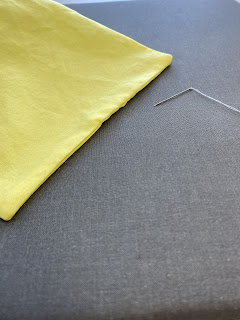This article is brought to you by Lizzsews.
Pencil cases or zipper pouches are perfect for so many different uses. They can store anything and everything! I love sewing these pencil cases and storing my crafting supplies in them.
Recommended read: How to sew snack bags
What you'll need:
- Plastic zipper
- Cotton fabric
- Sewing machine
- Pins
- Iron + Ironing board
- Rotary cutter + cutting board (or scissors)
How-to:
1. Cut 4 pieces of 7" x 6" fabric, two for the lining and two for the outer.
2. Place the liner fabric right side up, the zipper right side up on top at the top of the fabric (The top stop (the two devices at the top end of the zipper to prevent the slider from coming off the zipper) should be on the right), and the outer fabric right side down on top of everything.
3. Attach the zipper foot and sew along the top, you should be sewing all three layers.
4. Place the other piece of liner fabric right side up and place the unsewn edge of the zipper along the top. Place the outer fabric right side down on top of the zipper and sew along the edge with the zipper foot.
5. Iron the edges of the zipper.
6. Topstitch each side of the zipper.
Recommended read: What is topstitching
7. Unzip the zipper to just over halfway, match up the right sides of the outer fabrics and the right sides of the liner fabrics. You can push the zipper towards the lining or towards the outer fabric, I prefer it pushed towards the lining fabric.
8. Sew around the perimeter of everything, leave a gap on the bottom edge of the lining. I like to backstitch over the zipper too.
Optional: While sewing around the outer fabrics, add a branding label on the side of where the zipper pull is, face down. Make sure that you sew the label so that you can see the raw edges and the actual branding tag is on the inside, that way it works when you flip it inside out!
Recommended read: How to make branding labels/tags
9. Flip the bag inside out. Poke out the corners using a crochet hook, bamboo stick, scissors (be careful!), or whatever works for you, by going through the hole in the lining. Before pushing the lining into the outer fabric, iron it flat and topstitch the opening closed. You could also hand sew a hidden stitch here.
Recommended read: How to hand sew a hidden stitch
Leave a comment below and let me know if you made this pencil case! And don't forget to subscribe to stay up to date with all of Lizzsews new articles. See you next time!














Comments
Post a Comment